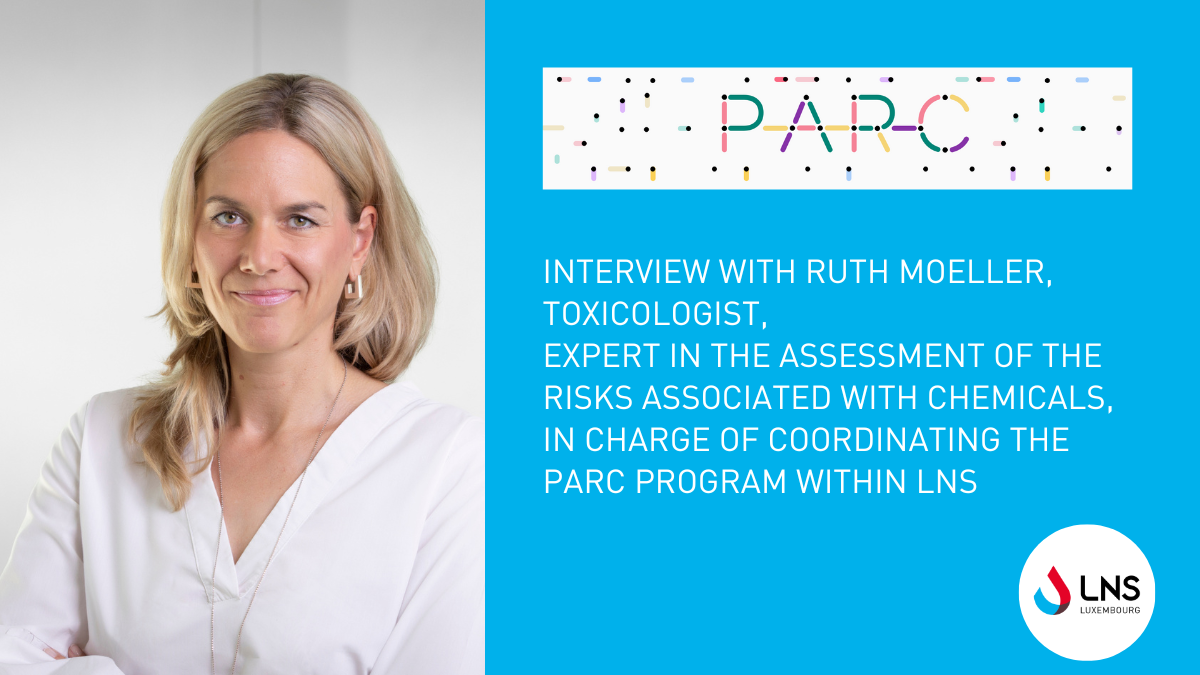- The Laboratory
- Organization
- Departments
- Jobs
- Analysis book
- Contact
- News
- Publications
- Download



Within our environment, we are constantly being exposed to all kinds of chemicals. In order to guarantee a better protection of individuals as well as the environment, European research program PARC aims to establish new methods, data and knowledge for assessing the risks associated with the use of chemicals. This European initiative brings together 200 research institutions from 28 countries, including the Laboratoire national de santé (LNS) in Luxembourg. We explore these issues with Ruth Moeller, a toxicologist and expert in the assessment of the risks associated with chemicals, in charge of coordinating the program within the LNS.
We find them in products from the manufacturing industry, in our paints, solvents, and a number of consumer products, as well as even being present in our food in the form of additives or contaminants… “Our lifestyles mean that we are constantly being exposed to chemicals. In cosmetics, in cleaning products, in our homes, at work, in the air around us, chemical substances can be found in varying concentrations,” explains Ruth Moeller, in charge of coordination of PARC – Partnership project for the Assessment of Risks from Chemicals – in the Grand Duchy of Luxembourg. “Until now, the assessment of the risks associated with exposure to these products has been carried out mainly element by element, with regard to a well-defined use on the market. However, the risks associated with the combination of chemicals– emanating from several sources, at varying levels of concentration – in our environment are poorly understood. It is to these issues that PARC wants to respond, by implementing a new approach to better anticipate emerging risks, to better account for combined risks and to assess chemical risks with a view to protecting health and the environment.” PARC aims to support the implementation of new orientations in European policies safeguarding our health and the environment.
This initiative takes place within the framework of a European Union chemicals strategy for sustainability towards a toxic-free environment, in pursuit of the “zero pollution” ambition defined within the framework of the European Green Deal. “In this case, it is a question of acquiring new data and knowledge and developing new methods and tools in pursuit of these objectives,” assures Ruth Moeller. “For this, the PARC project supports a network approach to develop and consolidate expertise in this area.”
More than 200 partners serving a shared purpose
Funded with €400 million by the European Commission and Member States, PARC involves 200 research institutions from 28 countries and the major agencies concerned, namely the European Chemicals Agency (ECHA), the European Food Safety Agency (EFSA) and the European Environment Agency (EEA). Five directorates-general of the European Commission and the relevant ministries of the member countries are also involved. The partnership spans 7 years, between May 2022 and May 2029.
“This project is a continuation of past initiatives, such as the European Human Biomonitoring Initiative (HBM4EU). However, its size is what sets it apart. One of the main challenges, in fact, is to set up a platform bringing together experts, researchers and regulators in various fields,” explains Ruth Moeller. “This network, according to the governance put in place and the priorities determined, must allow the emergence of a shared approach to these issues, the development of new risk assessment methods, the advancement of knowledge related to the impact of exposure to chemicals on our health and the environment, to implement innovative alternative solutions to assess the risks to organisms.” The network must make it possible to fill gaps in terms of available data, to bring out new computer models and methods of analysis. This coordinated work should support regulators, enable them to understand the implications, in order to better regulate the use of chemicals and contribute to minimizing the risks to health and the environment.
A nationwide approach coordinated by the LNS
In Luxembourg, the Laboratoire national de santé has been designated by the Ministry of Health to take on the role of lead institution. Nationwide, it is them who coordinate the various partners involved in the project: the Luxembourg Institute of Science & Technology (LIST), the Luxembourg Institute of Health (LIH), the University of Luxembourg (LCSB) and the LNS research team involved. The LNS, beyond this coordination and management mission, also contributes to the research carried out within the PARC,” adds Ruth Moeller.
In terms of research and innovation, the LNS team of the Department of Health Protection contributes to the program in several areas. “Through our expertise in human and indoor monitoring of chemical substances, we are active in subjects relating to the assessment of the general life and workplace exposure to chemicals measured in human individuals and in the indoor environment and their potential impact on the health of the population”, explains Ruth Moeller. One aspect here is also the use of innovative sampling methods. “We also contribute to the development of new modelling methods and approaches for estimating the presence of chemicals and their real life mixtures within the environment, their various sources and the uptake pathways, with a view to achieving better risk assessment.”
Within the LNS, around ten people are involved in this project.
National point of contact
As the National Hub Contact Point for the project, the role of the LNS is to facilitate exchanges between the various stakeholders who could be concerned by the project on a national level, such as industrial stakeholders, administrations and our society, and to disseminate information related to this initiative.